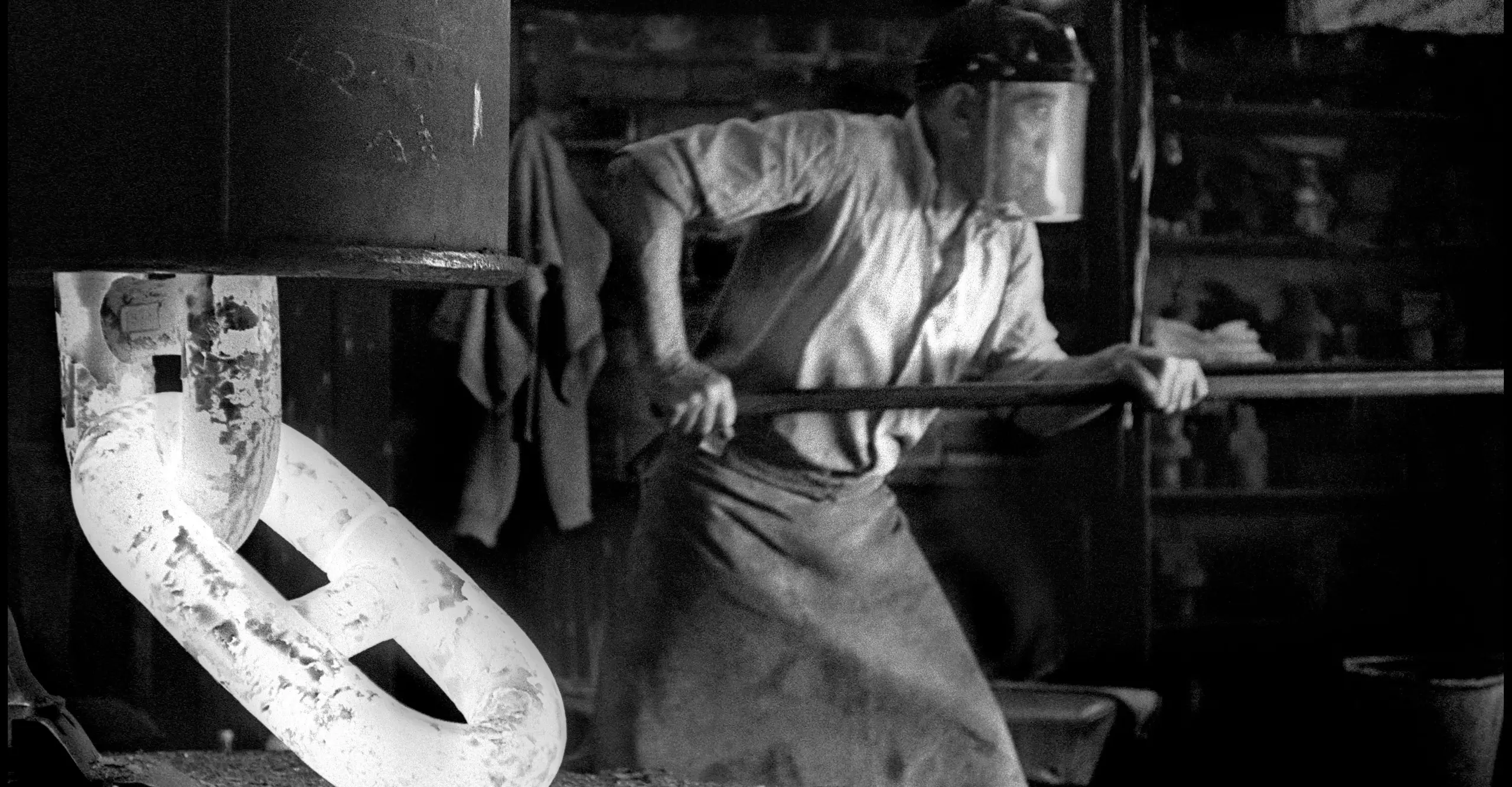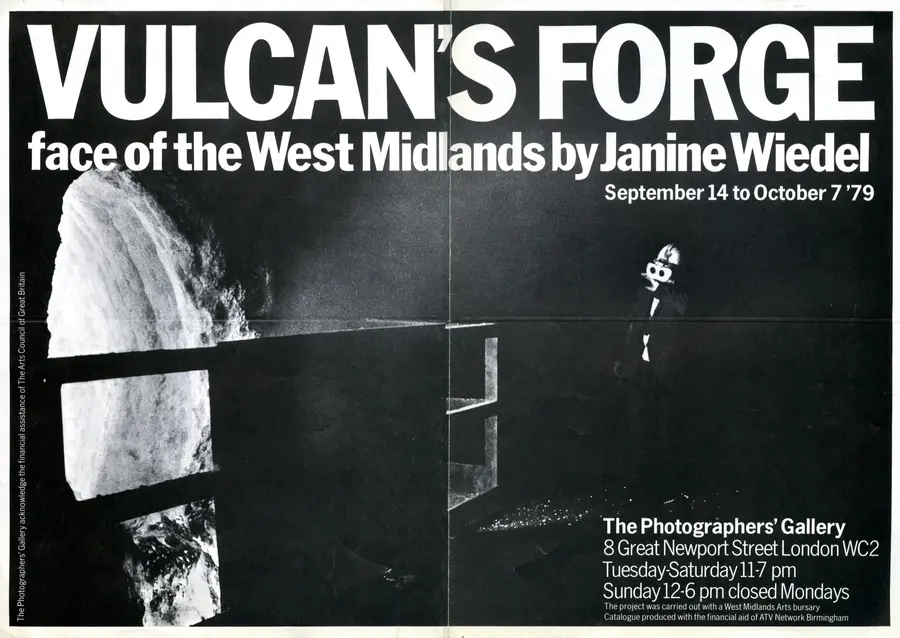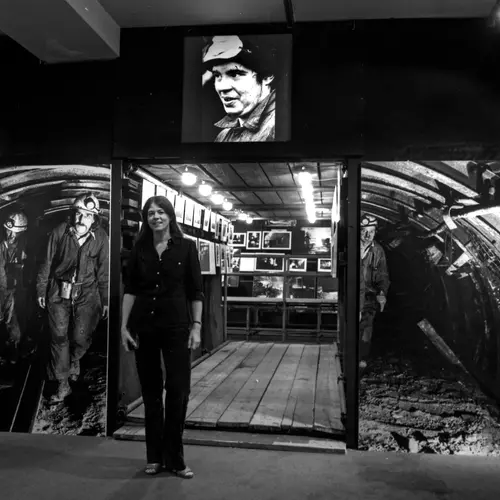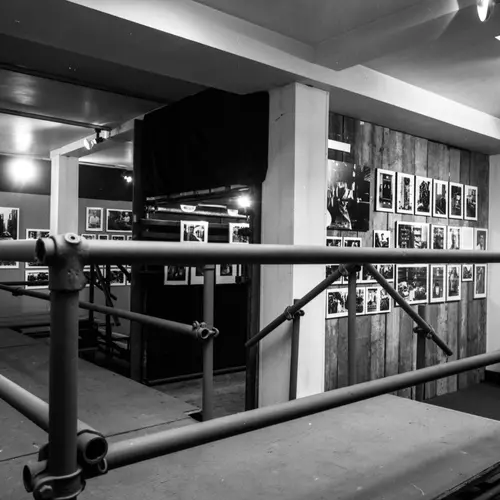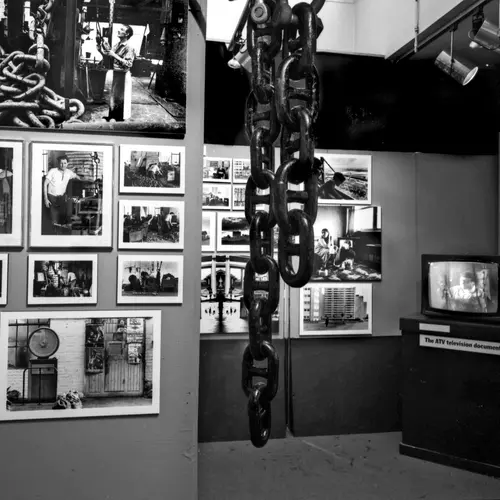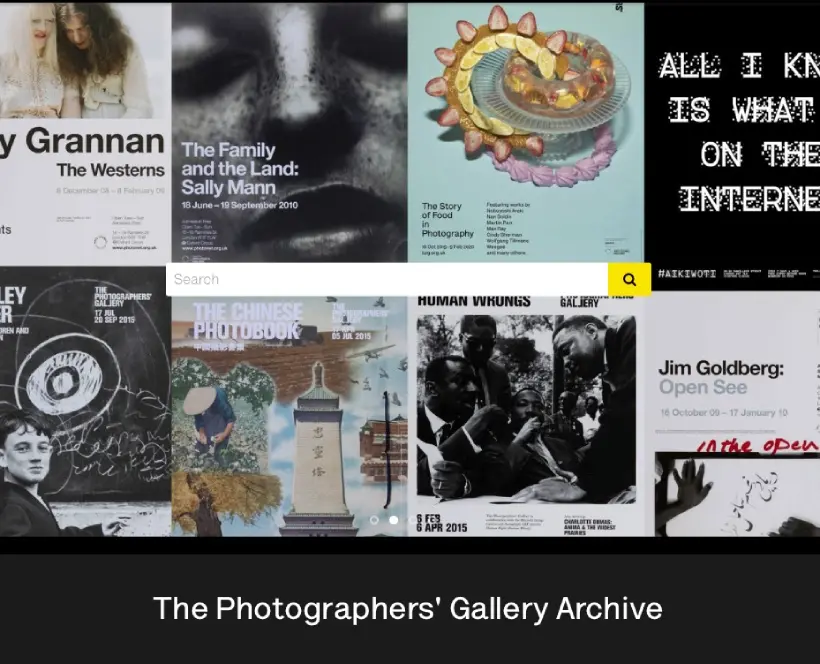This project which has taken two years to complete, was begun when Janine Wiedel won a Major Bursary from the West Midlands Arts Association - the first to be given to a photographer.
It began in 1977 and for the first three months Janine was the subject of an ATV Television Documentary 'A Camera in the Street' which added another dimension to the problems of getting to know the area and the people. This programme which was shown in the England our England' series, will be shown at the exhibition.
Janine, who was born in New York, has worked as a freelance photographer based in London since 1972. She much prefers working 'in depth' and before the West Midlands project had produced two books and exhibitions, one on the Irish Tinkers and one on the Eskimos of Baffin Island. Clearly the Midlands presented quite different problems, containing a much larger range of people and activities, spread over quite a wide area. In order to cover as much as possible, Janine divided the area into sections and worked through them systematically, with the intention of drawing the parts together to make a representative whole. She lived and travelled in a VW van which gave her freedom of movement and en- abled her to return to her London darkroom occasionally to print and sort out work in progress. She began in Birmingham, finding the city difficult to get the feel of at first - largely because of all the roadways and tunnels that divide it into arbitrary sections. Having arrived at Aston however, itself divided now by a lead road to Spaghetti Junction, she found a section on which she could concentrate and get to know relatively well.
Her method of working is to perhaps take initial pictures but then to get into the workshop and talk to the people. By living in the area, she tries to get to know the individuals before she does any concentrated shooting. In this way she went into steel mills, down coal mines and into chain workshops as well as into smaller engineering firms and the area in general.
The advantage of such in depth studies as Vulcan's Forge and our previous exhibition, Christiania, is that it gives the photographer time to get through initial first impressions, to confirm or redefine them and to produce a more full and complete view of a community while still remaining a relatively dispassionate observer. Because the final choice of work is based on photographic quality as well as the information contained in the pictures, the total is often ideal exhibition and book material and has a life of its own outside the immediate local impact.
The exhibition is being laid out to try to give an impression of the working conditions and some atmosphere of the area as a whole so that instead of rows of uniformly sized photographs there will be sections devoted to different industries, some special lighting and audio visual material will be used as well as the video tape of the ATV programme. This will be our second exhibition this year where we are trying to pursue documentary photography in a didactic way - making use of the combination of information and photographic quality to tell a whole story. Together with their catalogues we hope that this exhibition and that of Mark Edwards on Christiania will show that a new form for exhibiting these well-researched documentary projects has been found.
Exhibition designed by Peter Rea - Archetype Visual Studies, London.
For further information on this and past exhibitions, visit our Archive and Study Room.
